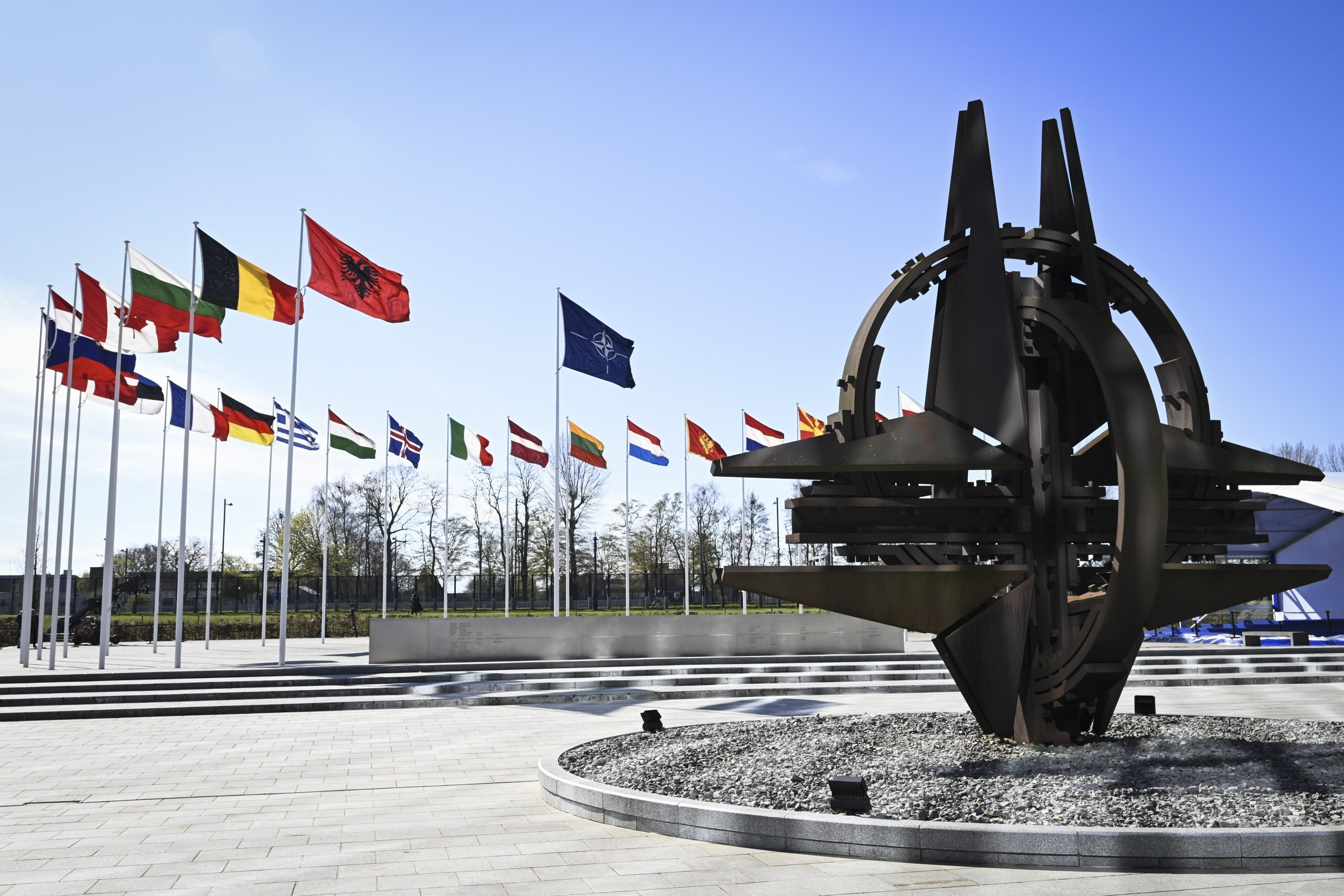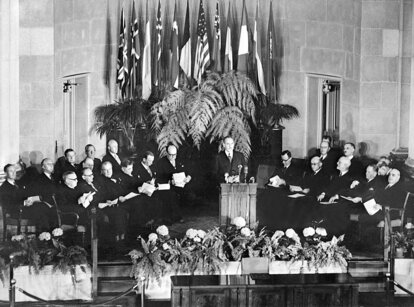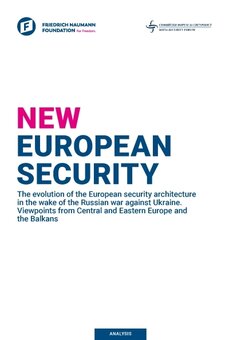75 years of NATO
After 75 years, NATO comes full circle

A sculpture and flags in front of the NATO headquarters in Brussels, Belgium.
© picture alliance/dpa/Lehtikuva | Emmi KorhonenAs NATO celebrates its 75th anniversary, it is possibly more relevant than ever before. With Russia’s aggression presenting an ever-growing threat to the European continent, the Alliance is back as the cornerstone of Europe’s security. However, amid a rapidly changing geopolitical landscape, NATO once again finds itself in the middle of a transformation.
When NATO was founded on 4 April 1949, its main aim was to protect the Allies against a Soviet invasion of Western Europe. At the time, 12 countries signed up to the founding treaty in Washington, D.C. At the heart of the treaty lies the principle of collective defence, meaning that an attack against one Ally is seen as an attack against all Allies. The commitment to collective defence is still in place, but much has changed in the meantime. Today, the Alliance has grown to 32 members, it has entered new domains, such as space and cyberspace, and NATO is developing an increasingly global outlook.

The representatives of the participating countries during the signing ceremony in Washington D.C. on 4 April 1949. Under the symbol of the four-pointed compass rose, ten European countries joined forces with the USA and Canada on 4 April 1949 to form the "North Atlantic Treaty Organisation" defence alliance.
© picture-alliance / dpa | epa AFPNATO’s transformation
During its 75-year existence, NATO’s mission has been characterised by transformation. As the Cold War came to an end, and the Alliance had two large eastward enlargement rounds in 1999 and 2004, NATO started a long process of redefining its purpose. From the early 90s onwards, the Alliance moved away from traditional deterrence and developed more crisis management capabilities. This new focus enabled NATO to conduct operations and missions in Bosnia and Herzegovina, Kosovo, Afghanistan, Libya and Iraq. These were important assignments for transatlantic security, but a clear strategic mission seemed to be missing. In 2019, it even led to an infamous remark by French President Emmanuel Macron that NATO was “brain dead”.
Response to Russia’s invasion of Ukraine
This all changed with Russia’s full-scale invasion of Ukraine in 2022. Following Russia’s illegal annexation of Crimea in 2014, NATO had already started to focus more on the Russian threat, but the latest invasion put this front and centre of the transatlantic threat assessment. Since the start of the war, NATO has activated its defence plans, deployed units of the NATO Response Force to Poland, Romania and Germany, and strengthened the troop presence on its eastern flank. In the process, NATO has once again established itself as Europe’s primary security provider against the Russian threat.
New challenges
To sustain this important role and to further develop the Alliance, NATO once again faces the challenge of transformation. With Russia seeking to weaken Ukraine by waging a war of attrition as well as posing an increasingly urgent threat to NATO members the longer the war lasts, there is a need for NATO to adapt to the new security situation. This time much of that transformation will have to happen at a societal level. In Germany, this has been captured first by the call for a Zeitenwende and more recently by the German Defence Minister’s announcement that the country should become Kriegstüchtig, or war-ready. Similar directions can be seen in political discussions in many other NATO states. Where is NATO heading and how can it adapt to the new reality?
Collective defence
After years of investment in crisis management capabilities, it will now be important to focus more on collective defence. This means a renewed focus on territorial defence, a review of NATO’s force structure and a higher number of troops. Much of this was already presented in the 2022 Strategic Concept, the latest update of NATO’s main strategic document, but with persistent troop shortages and budgets lagging behind, it is important to keep up the political pressure.
Resilience against hybrid threats
In recent years, hybrid warfare has become a growing area of concern for NATO and its members. Hybrid methods are designed to exploit societal vulnerabilities and foreign powers often use them in a way where they bring about damage but do not qualify as war. Examples include cyberattacks, disinformation campaigns, electoral interference, the targeting of critical infrastructure and the instrumentalisation of migrants.
At the moment, NATO members encounter hybrid attacks daily. Dealing with these threats and building up resilience requires much more civil-military cooperation, which is not easy for a relatively closed organisation. On top of that, there is no consensus among members on the role of NATO in the hybrid domain. Some see NATO’s responsibility as purely military, whereas others want it to engage in broader discussions about societal resilience. However, with so much of the action deliberately happening below the threshold of an armed attack, there is certainly a role to play.
Europe taking responsibility
The biggest challenge of all is for Europe to take more responsibility in the transatlantic tandem. There is a long-running debate about burden sharing and Europe’s dependency on the US, in which it has become clear that there is a need for a stronger European pillar in NATO. However, with a possible second Trump Presidency looming, a strategic reorientation of the US, and insufficient support for Ukraine, it is more urgent than ever that this issue is addressed. This means massive investments in defence, a push for more integration and a willingness to take leadership.
After 75 years of the transatlantic security alliance, NATO finds itself in a position of strength. Once again, it has a clear purpose and mission, and it is widely seen as Europe’s primary security provider. However, to stay in this position, NATO faces new challenges along the way. The Alliance will have to keep developing itself to ensure its relevance for the next 75 years. The main responsibility for this rests in Europe and we should not waste time in addressing the challenges at hand.

